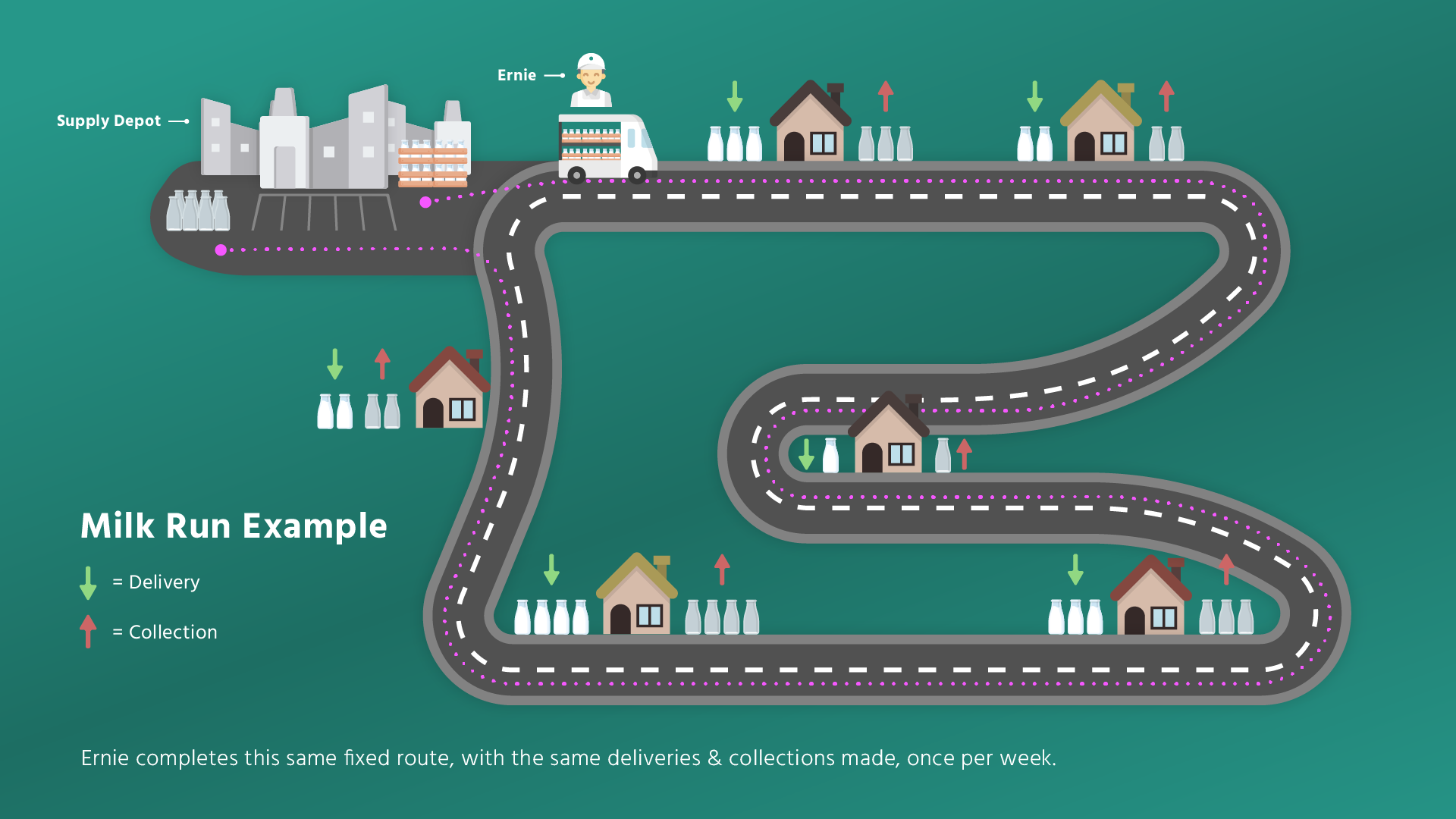When it comes to the transportation of goods, you may have heard the term ‘milk run’ being mentioned.
So what exactly does it mean, what’s the official definition and what are some examples of them being used?
Milk Run Meaning:
A ‘milk run’ is the name given to the process where a vehicle picks up and/or drops off various quantities of a good or product, along a fixed route, on a single run and generally on a recurring basis.
The term comes from American urban history and relates to the process used, as you can imagine, by a milkman to drop off milk bottles along a set route, as well as collecting the empty milk bottles from each of the stops on the run.
In logistics, ‘milk runs’ aren’t limited to being used in the milk industry and can be used as the delivery/collection method for any range of goods/materials where there is a fixed route, with multiple stops, that happens on a recurring basis.
Milk Run Definition:
noun Slang.
A routine trip or undertaking, especially one presenting little danger or difficulty:
The flight from New York to Chicago was a milk run for the experienced pilot and crew.
From Dictionary.com
It has been stated however, that the actual phrase originated in World War II, where UK and US Air Forces used the phrase to describe a mission that carried very little danger.
Milk Run Example for Deliveries and Collections
We’ll stick with the theme of the milk industry to give you an example of how ‘milk runs’ can be used for both deliveries and collections.
Let’s meet our milkman, we’ll call him Ernie.
Ernie starts his shift at the bottling plant where he loads all of the milk for the day’s deliveries onto his truck.
Ernie has 20 stops on his fixed route, and he completes this run every single week to deliver milk to his customers.
Each customer requests different quantities of milk, so the amount Ernie has to deliver varies from stop to stop.
The customers will also leave out their empty milk bottles from the previous weeks’ delivery for Ernie to collect when he makes this week’s delivery.
Once Ernie has delivered all of the milk to his customers, and collected all of the empty bottles, he returns the truck to the bottling plant to drop off the empty bottles ready for them to be washed and recycled for the next delivery.

The ‘milk run’ delivery method is also commonly used to describe the process of tankers collecting varying quantities of milk from different dairies along a fixed route, before delivering the full tanker to a destination for processing and packaging.
So you can see that, regardless of whether your business is making either deliveries or collections, it is possible to use these type of fixed route runs for both.
It’s quite simply a case of having a specific route that contains a set number of stops that you make, generally on a regular basis.
And they’re not just limited to milk, it can be used across a whole range of industries involving the distribution of goods, such as: fuel, building/manufacturing materials and automotive transportation.
Want to read more blog articles about logistics?
As you would expect of a transport and logistics software provider, we’ve written lots and lots of articles over the years about, well, logistics. Here’s a selection of articles you might want to read on our favourite subject:
A look at the term ‘empty miles‘; what the impact is on your business and, most importantly, what logistics businesses can do to avoid them.
‘What is Track and Trace in Logistics‘ aims to define what that means in the food manufacturing and pharmaceutical industry (and is something that Stream does exceptionally well).
Frequently Asked Questions
The reason they’re called ‘milk runs’, is because the phrase originates from the milk industry and relates to the process they use to collect milk in tankers and deliver it to the supplier at the end of the run.
You can indeed create ‘milk runs’ in Stream. This is achieved by building out a ‘master run’, which serves as a template in the planning module for creating a fixed route where there are set stops each time you complete the run. You can find guides on how to set up master runs, and how to create a new run from a master run in Stream, in our knowledge base.








